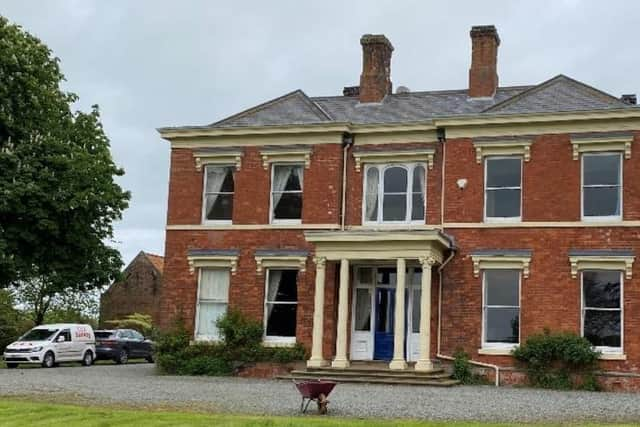Chance to live in East Riding country hall's grounds under coach house stable conversion plans
Plans lodged with East Riding Council would see the buildings, which still include features from when horses called them home, converted for human use in the grounds of Elstronwick Hall. Proposals drawn up by Kelley and MacPherson Architects stated surviving features including saddle rooms, decorative vents and mangers and their setting made them unique.
The buildings lie within the grounds of the seven-bedroom hall, in Back Lane, Elstronwick, north of Hedon. Elstronwick Hall was built in the 1800s out of red brick and stone and was extended in the following century.
Advertisement
Hide AdAdvertisement
Hide AdIt recently went on the market with a guide price of £650,000. Plans for the coach house and stables would see the ground floor of the former divided between a garden room, kitchen and dining space and two bedrooms.


The coach house’s first floor would feature a bedroom along with living and storage space. In the stables, the ground floor would have a kitchen and dining area, snug, living room and utility and bathroom along with the terrace.
Its first floor would have two bedrooms, a bathroom and a grass roof. Both buildings would require extensive conversion works and planning was granted for the conversions in 2021.
But new plans have been lodged because the conversion of the coach house cannot go ahead without removing its ceiling and their beams. Plans stated the applicants had instead opted for conversions that would be less harmful to the original features of the building.
Advertisement
Hide AdAdvertisement
Hide AdThey stated: “The significance of the coach house is enhanced through its current surviving form and detailing relating to its former use. Access to the roof construction and first floor stair could reveal more about the heritage significance of the building.
“Its significance was harmed through the previous removal of the main coach house door and its replacement with two modern metal garage doors.
“The significance of the stable building lies chiefly in its surviving plan form, built fabric and tack room fixtures.
“The walled garden to the west of the coach hose makes an important contribution to the setting of the coach house and the wider setting of the hall.”